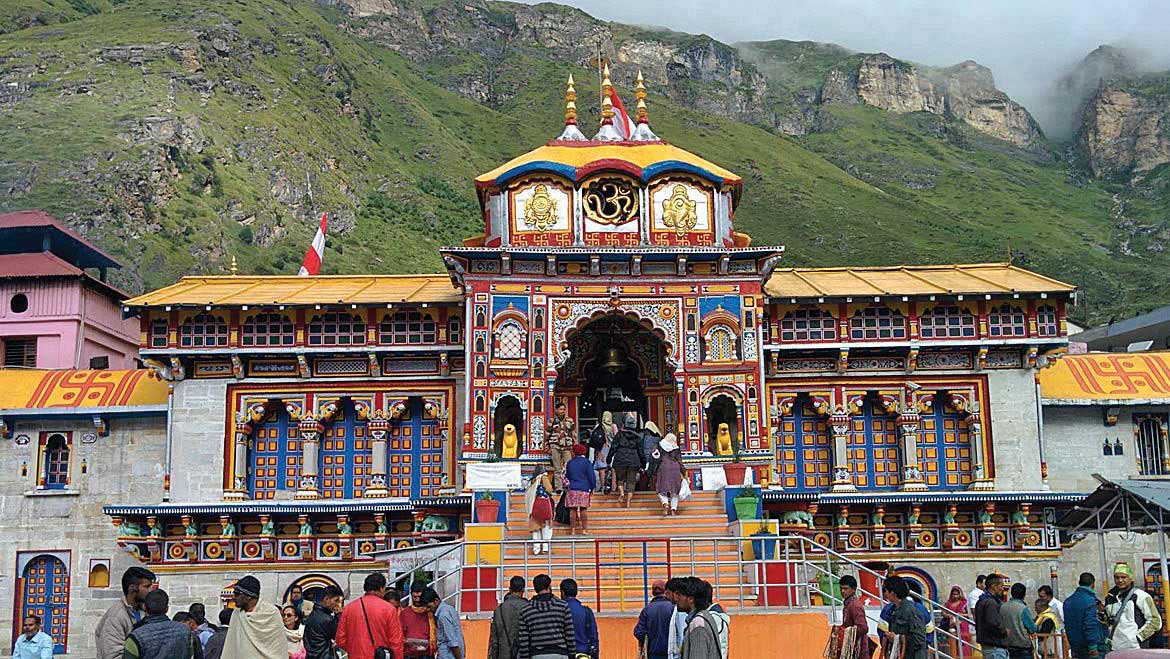A Ten-Year Journey from the Villages of Nepal to the Halls of Congress
‘You can’t pump water uphill!’ But Rajeev Goyal has, despite the odds and the old cliché.
In The Springs of Namje, a memoir, Goyal begins by describing his work as an American Peace Corps Volunteer (PCV) with villagers in eastern Nepal. Their challenge was to bring water from springs at the bottom of Namje Hill up to the houses at the top. Challenging the hill became a metaphor for almost all Rajeev has done since.
That’s half of this fascinating book. The other half recounts the difficulties he faced as a lobbyist for more Peace Corps funding on another hill - ‘Capitol Hill’, the U.S. Congress in Washington, DC.
 From 2001 to 2003 as a PCV in Nepal, Rajeev’s major accomplishment was helping the locals build the Namje water system. What he learned about leadership and pursuing a difficult but successful development enterprise in a poor mountain village taught him many lessons, including the true meaning of ‘development’. Not only did water come to Namje, but it is now pumping huge profits into the community, enough to spur more development. But therein lies a paradox, he says. Infrastructure development in a poor community like Namje can create more poverty. After the water project, roads and greedy speculators came, as well as land fragmentation and unsustainable agriculture.
From 2001 to 2003 as a PCV in Nepal, Rajeev’s major accomplishment was helping the locals build the Namje water system. What he learned about leadership and pursuing a difficult but successful development enterprise in a poor mountain village taught him many lessons, including the true meaning of ‘development’. Not only did water come to Namje, but it is now pumping huge profits into the community, enough to spur more development. But therein lies a paradox, he says. Infrastructure development in a poor community like Namje can create more poverty. After the water project, roads and greedy speculators came, as well as land fragmentation and unsustainable agriculture.
“It wasn’t the road or great mobility in the abstract that was a problem,” he writes. Rather, it was “Cutting up the landscape and selling the small plots to people who had no intention of sustainable farming or doing anything else beneficial on the land...” That, in turn, is indicative of “an insidious trend motivated by greed of a few powerful men, under the guise of [more] ‘development’.”
The villagers don’t need more physical infrastructure, he says. Rather, they need “ideas, policies, knowledge, education, skills, design support: an invisible infrastructure to better guide the development.”
There’s much more to this book than pumping water uphill, more about local leadership, poverty, financial growth, unbridled avarice, short-sighted development and, not least, Goyal’s own coming of age as a progressive activist. Suffice to say here that what Rajeev learned in Namje helped him surmount subsequent ‘hills’ that he has encountered.
After Peace Corps, Rajeev worked as a translator for the UN Office of the High Commissioner for Human Rights (OHCHR) in Kathmandu. Although his Nepali was good, translating in the heated atmosphere of the Maoist insurgency and its aftermath was touchy, especially where some words and concepts had more than one meaning and could be easily and angrily misinterpreted. This part of Rajeev’s story is a lesson in humility while striving for perfection in a politically charged atmosphere involving international and Nepal government officials, army officers, Maoist leaders, and locals.
When he returned to the USA, and after earning a law degree, Rajeev became national coordinator for the Push for Peace Corps Campaign, lobbying Congress to significantly increase funding for the American Peace Corps worldwide. What the Push Campaign sought was a miniscule bit of the American budget, a mere $450 million annually. It sounds like a lot, but it’s actually less than 1 percent of the US foreign aid budget, which is, itself, less than 1 percent of the entire national budget.
Climbing Capitol Hill day after day presented Rajeev with a very steep learning curve. To understand the issues, he read books about how Congress turns appropriations bills into law. In the end, however, he thinks Sun Tzu’s philosophical The Art of War is more appropriate to the task!
Lobbying Congress was difficult, and while his efforts came up slightly short of his goals, the final appropriations for 2009 and 2010 were encouraging. They allowed the Peace Corps to open up several more countries to volunteers and, not insignificantly, to return to Nepal after a hiatus of eight years.
The Springs of Namje by Rajeev Goyal is an insightful and eloquently written book, a story well told.
Beacon Press (Boston), 2012, 214 pages. Check Kathmandu book stores for local availability. Rajeev may be contacted at rajeevkumargoyal@gmail.com
Rajeev Goyal is currently enrolled in a degree course in international horticulture and sustainable development for which, not surprisingly, his thesis is on eastern Nepal. His experiences in Namje have influenced his life, his goals and accomplishments. He says, however, that credit for the water pump goes to the Namje villagers whom he assisted.
The ‘Foreword’ to the book is by Peter Hessler, an award winning writer who also wrote about Rajeev in ‘Village Voice: The Peace Corps’s Brightest Hope’. (Read it online at newyorker.com/reporting/2010/12/20/101220fa_fact_hessler.) Some people have sought similarities between Rajeev in Nepal and Greg Mortensen in Pakistan (as told in the book, Three Cups of Tea). Be sure to read Hessler’s insightful analysis of ‘What Mortensen Got Wrong’ online at newyorker.com/online/blogs/newsdesk/2011/04/greg-mortenson-peter-hessler.html.
Don Messerschmidt is a Contributing Editor to ECS Nepal magazine. He can be contacted at don.editor@gmail.com.










